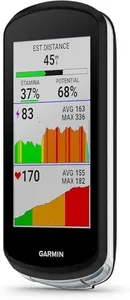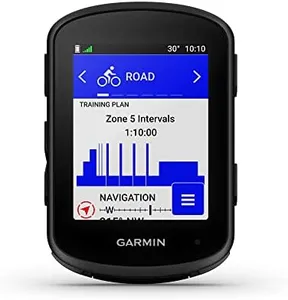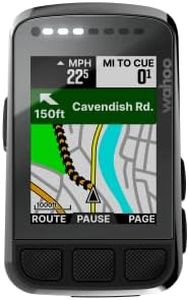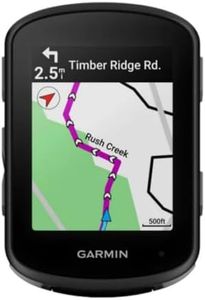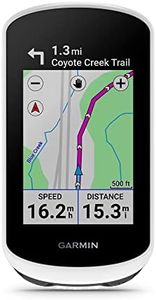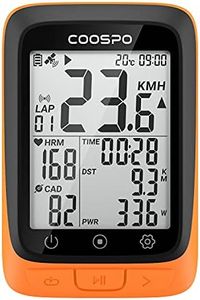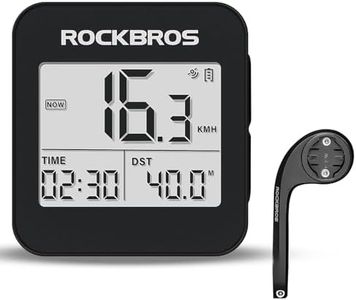We Use CookiesWe use cookies to enhance the security, performance,
functionality and for analytical and promotional activities. By continuing to browse this site you
are agreeing to our privacy policy
9 Best Cycling Gps
From leading brands and best sellers available on the web.Buying Guide for the Best Cycling Gps
Choosing the right cycling GPS can make your rides safer, more enjoyable, and help you track your progress over time. When picking a cycling GPS, it's important to think about how and where you ride, what features you really need, and how easy the device is to use. Understanding the key specifications will help you find a model that fits your riding style and goals, whether you're a casual rider, a commuter, or a serious cyclist.Screen Size and TypeScreen size refers to how large the display is, and the type can be either color or black-and-white, touch or button-operated. A larger screen is easier to read, especially when riding fast or in bright sunlight, but it can make the device bulkier. Smaller screens are lighter and more compact, which some riders prefer. Touchscreens are convenient but may be harder to use with gloves or in the rain, while buttons are more reliable in tough conditions. Think about your typical riding environment and whether you value readability or compactness more.
Battery LifeBattery life tells you how long the GPS will last on a single charge. This is important because you don't want your device to die in the middle of a ride. Shorter battery life (around 8-12 hours) is usually fine for daily commutes or short rides, while longer battery life (15-24+ hours) is better for long-distance rides, touring, or multi-day adventures. Consider how long your typical rides are and pick a device that can comfortably last through them.
Navigation FeaturesNavigation features include things like turn-by-turn directions, route planning, and map display. Basic models may only record your route, while advanced ones can guide you along pre-set routes or even reroute you if you go off course. If you often explore new areas or need help finding your way, look for a device with detailed mapping and navigation. If you mostly ride familiar routes, simpler navigation may be enough.
ConnectivityConnectivity refers to how the GPS communicates with other devices, such as smartphones, heart rate monitors, or power meters. Common options include Bluetooth, ANT+, and Wi-Fi. If you want to sync your rides automatically, receive notifications, or connect to sensors, make sure the device supports the connections you need. If you just want to track your rides, basic connectivity may be sufficient.
Data Tracking and MetricsThis spec covers what kind of ride data the GPS can record, such as speed, distance, elevation, heart rate, cadence, and power. Some devices only track basic stats, while others offer advanced performance metrics. If you're training seriously or want to analyze your rides in detail, look for a device with comprehensive data tracking. For casual riders, basic stats may be all you need.
Durability and Weather ResistanceDurability and weather resistance indicate how well the device can handle rain, dust, and rough handling. Look for a GPS with a good waterproof rating if you ride in all weather conditions, and consider how sturdy the device feels. If you ride mostly in good weather and on smooth roads, this may be less important, but for mountain biking or year-round commuting, it's a key factor.
Mounting OptionsMounting options describe how and where you can attach the GPS to your bike. Some devices come with multiple mounts for different handlebar setups, while others are more limited. Make sure the GPS can be securely and conveniently mounted on your bike, especially if you have an unusual handlebar shape or want to switch it between bikes.
